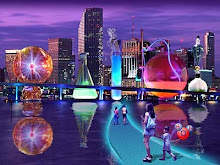- Synthesis: ( Direct combustion) two or more substances combine to form a single product. Example~Hydrogen gas and oxygen gas burn to produce water. 2H2+O2 2H2O
- Decomposition: Substance breaks down into two simpler substances. Example~potassium chlorate when heated comes apart into oxygen gas and potassium chloride. 2 KClO3 2 KCl + 3 O2
- Single Displacement (Replacement): one element fakes place of another in a compound. Example~Aluminum and iron trioxide.
- Double displacement (Replacement): positive and negative of two ionic compounds interchange. Example~calcium chloride and silver nitrate are reacted to form insoluble silver chloride.
- Combustion: Rapidly combines with oxygen to form oxides and release energy. Example~Hydrocarbon plus oxygen forms carbon dioxide and water.
Purpose:
- The purpose of this lab is to be able to see and identify the 5 chemical reactions rather than just being told what they are and what they do.
- Safety Goggles
- Safety Apron
- 4 small test tubes
- Zinc
- CuSO4
- Ba(No3)2
- Magnesium ribbon
- Bunsen burner
- Striker
- Test tube clasp
- H2O2
- MnO2
- test tube rack

Procedure:
- Put on Safety Gear.
- Obtain 4 small test tubes.
- In the first test tube, place a piece of zinc and about 1/2 mL of CuSO4 solution. Record observations.
- In the second test tube add about 1/2 mL Ba(NO3)2 solution to about 1/2 mL of CuSO4 solution. Record Observations.
- In the third test tube place a piece of magnesium ribbon. Add about 1/2 mL of HCl solution. Record Observations.
- Light a Bunsen burner (burning propane gas, C3H8). Record observations of the flame.
- In the fourth test tube add about 2 mL H2O2 solution. Lightly heat it. Record Observations.
- Add a pinch of MnO2 (catalyst) to the H2O2 solution. Lightly heat it. Record observations.
Discussion:
Through this entire experiment we are more capable of understanding the reactions, for we can now connect it with a visual presentation. This caused us to think more logically as we had to come up with our own equations and decided with reaction was being presented.
Conclusion:
Through each individual experiment we saw one of the 5 reactions and evidence of these reactions. We were capable of identifying the reactions from this evidence. The reaction descriptions, type, equation, and evidence of the reaction were placed in a data table for a presentation of the information that is more pleasing to the eye.




